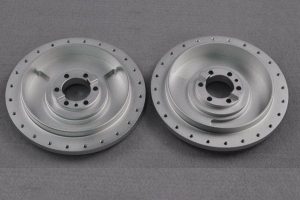Field service workers are an essential component of any business. The COVID-19 pandemic, when these people began quitting their jobs in droves, was an illustrative example of how many corporations routinely disregard their plight.
The problem is only a small part of a far larger concern, sadly. Since frontline workers make up 80% of the global workforce, the fact that all industries consistently struggle with a labor shortage implicates serious issues.
Various studies demonstrate that the main problem affecting frontline workers is a strained relationship with the management.
In other words, frontline managers need to be trained ASAP, with a focus on fieldwork expertise.
Unfortunately, poor relationships aren’t the only issue, According to Microsoft’s Work Trend Index:
“Most front-line workers believe they are underpaid and their work is not appreciated; most front-line workers have a poor work-life balance; 63% of front-line workers are searching for job opportunities created by technology; 56% of front-line workers feel pressure to adopt new technology out of concern for their jobs; 55% of front-line workers have been forced to learn new technology on their own without receiving any training; and most front-line workers have a poor work-life balance.”
Basically, field workers rarely have access to modern technology that would enable them to automate manual tasks and streamline excessively complex field service processes.
There are certainly ways to address these complicated matters but the change needs to be gradual and far-reaching. Retaining your field service team starts with honest communications complemented by efficient approaches and new tech.
As regards the latter, the first step is to improve all phases of the field service process.
The Five Stages of Field Work
As mentioned above, fieldwork is a complex process. In other words, there’s a lot of planning involved. In order to properly manage all stages of the process, businesses need to plan ahead and stick to pre-defined prospects.
There are 5 stages of project management for construction work, as follows:
- Initiation
- Planning
- Execution
- Control
- Closing
Initiation
Initiation is the evaluation of a project, the goal being to determine whether it’s worth the trouble.
Ask yourself the following questions:
- Is the value of the project worth your time?
- Are your company services a good fit for the project?
- Do you have enough time to dedicate to the project?
- Do you have the resources necessary to nail the project?
If the answer to these questions is yes, then proceed to place the bid.
Planning
Once you determine a project is worth considering, proceed to plan. This includes a couple of necessary stages, which include:
- Profitability
- Customer satisfaction
- Employee satisfaction
Make sure to include all costs in the budget, including hard costs, soft costs, and contingency allowances.
Next on, break down the project structure, as follows:
- Project scope
- Deliverables
- On-site logistics
Finally, it is crucial to draft communication-, procurement-, and safety plans.
It is this step where new tech may come in handy. Technology like delivery tracking, for example, can simplify significant parts of the process. Others may also come to mind.
Execution and Control
This step basically portends making certain that plans are being carried out and project progress is being monitored. This step is closely linked to the next stage — control.
Here’s a recommended checklist for both stages:
- Keep daily activity, work, and safety logs
- Monitor and manage change orders
- Monitor materials being used
- Monitor the workforce on and off the site
- Monitor equipment
- Monitor costs and cash flow
- Ensure payments and subs are on time
- Track expenses
Closing
Lastly, the closing stage commences once the project is close to completion.
The final cuts should include:
- Finishing punch list
- Final inspections
- Ensuring everything that has been agreed to in the contract has been met
- Reviewing customer satisfaction
- Obtaining a certificate of completion
Deploying New Tech
Fieldwork calls for detailed planning, as evident from the stages detailed above. Many steps and sub-steps of the process can be greatly simplified (and streamlined, where applicable) by deploying new technologies.
Businesses versed in the industry know all about recommended software, so we’ll mention something new here.
Artificial intelligence (AI) and augmented reality (AR) software may well be used in this context.
E.g., AI can be used to streamline facility maintenance. These tools allow for operating equipment remotely and using sensors to complete various tasks, jobs, and processes. These tools are nowadays known as the Internet of Things (IoT).
The IoT software makes sure that assets are operating properly and reports to facility personnel by comparing current performance with historic data.
IoT sensors perform a myriad of tasks, the most significant of which include:
- Setting up baselines for asset performance indicators
- Figuring out the upper and lower bounds of asset performance
- Gathering usage data
- Sending data to AI-powered software
How Will This Help You Keep Your Frontline Teams?
Businesses should always strive to enhance working conditions. By focusing on employee safety, simplified procedures, and honest communication, an organization can do wonders in increasing employee performance and satisfaction.
And there you have it — engaged workers are a driving force behind any successful project. Cumulatively, all projects add up to fair and reputable practices.











